More have longer zooms, thinner bodies,
and smart-phone interfaces
This season promises
the biggest improvements to cameras in years. Responding to the challenge of
smart phones, camera makers have boosted performance, added previously
high-priced technologies to less costly models, and taken a cue from mobile
devices by adding connectivity and friendlier user interfaces.
Trends you need to know
Our tests of more than
200 basic and advanced cameras, plus models we’re now testing, highlight
interesting trends.
Enhanced
capabilities.
Even basic models are
ratcheting up how quickly they shoot stills and how well they capture video.
Some, such as the Canon PowerShot $110, $450, can fire 8 to 10 frames per
second at full resolution, a capability previously reserved for advanced
cameras.
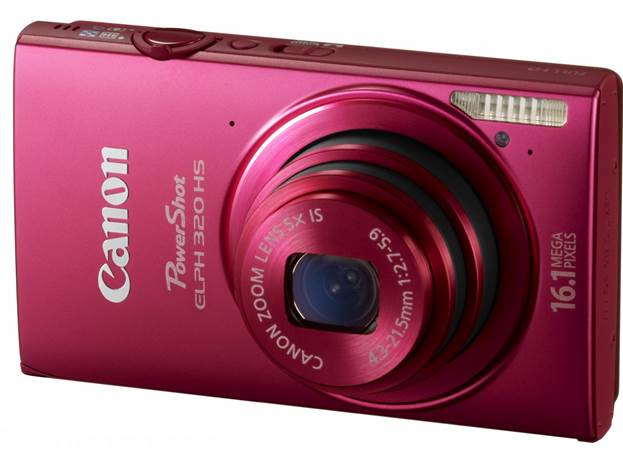
The Canon PowerShot
Because of improved
in-camera processing, video frame and bit rates have increased, yielding
smoother playback, even with action scenes. Most models now have convenient,
dedicated video buttons.
Almost all basic
models in the Ratings now have wide-angle capability (great for landscapes and
group shots), which used to command a premium price. Fourteen can even shoot as
wide as 24mm.
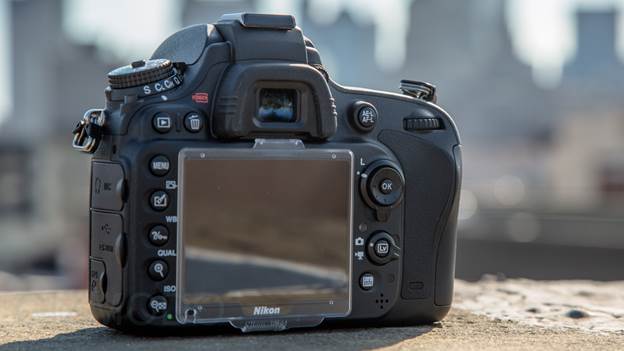
The Nikon D600, one of the first
consumer models to feature a larger, full-frame image sensor
Another way camera
makers are beefing up performance is by bringing pricey, pro-style capabilities
down to consumer-priced advanced models. For example, the Nikon D600, $2,100
(body only), is one of the first consumer models to feature a larger,
full-frame image sensor. On professional SLRs, such sensors have been known to
produce great performance in low light and improved dynamic range.
Thinner,
lighter, longer lenses.
The recently
introduced Canon PowerShot SX50 HS, $480, broke new ground with a 50x zoom, the
longest of any basic model. Most superzooms offer 16x to 20x, but many are
smaller, thinner, and lighter than previous models.
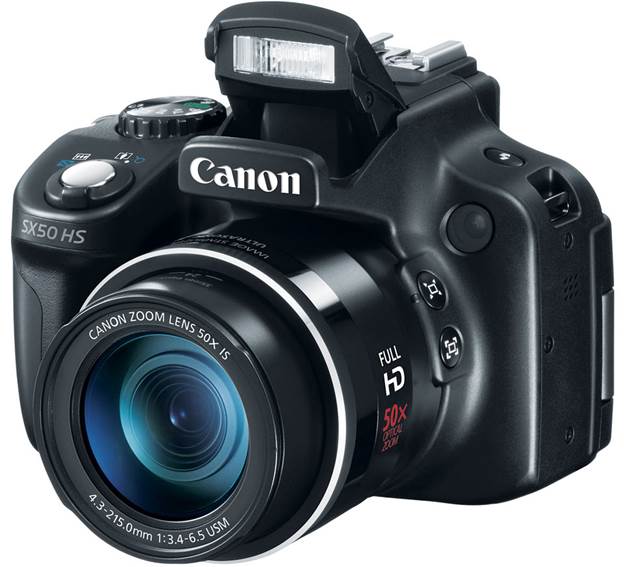
Canon PowerShot SX50 HS 50x zoom
More
connectivity.
Three recommended
Samsung models in our Ratings feature Wi-Fi: the WB850F superzoom and two
SLR-likes, the NX20 and NX210. And the first Android-powered cameras have
appeared, including Nikon’s Coolpix S800c, $350, and Samsung’s Galaxy camera.
As with smart phones, they are able to down-load apps from stores.
Samsung has announced
that the Galaxy camera will have 3G or 4G wireless data connectivity (depending
on the version). The combination of apps and wireless connectivity would enable
you to shoot still images or videos, edit them within the camera, and post them
directly from the camera to an online service such as Instagram or Facebook
without compromising image quality.
Better-performing
rugged models.
Almost all brands
offer at least one such models. In the past, their image quality tended to be
lower than for higher-ranked conventional ones. This year, performance rose for
some rugged models, which are now grouped separately in the Ratings. Four had
very good image quality for photos, and two had very good video quality.
Ratings Basic Cameras: Recommended models only From 157
tested.
Overview
Image-quality scores
for the basic cameras in the Ratings can’t be compared with those of the
advanced cameras, which we hold to a higher standard.
Best
values in small cameras
A1: Nikon $260
A2: Canon $260
A3: Sony $230
A11: Panasonic $130 CR
Best Buy
C2: Canon $230
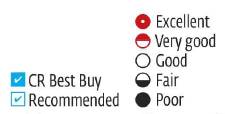

A. Subcompact for those who need a
camera that fits in a purse or pocket
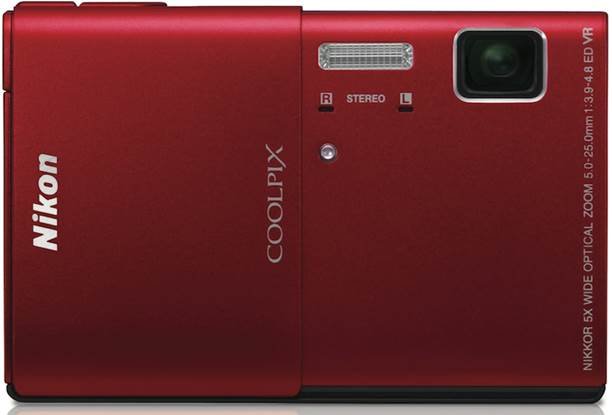
A1. Nikon Coolpix S100
A1 has higher
resolution and a larger LCD than most subcompacts, plus very good video quality
and a touch screen. A2 has a generous 8X zoom and very good LCD quality. A3 is
very lightweight, has a touch-screen display and shoots very good photos, flash
shots, and video. It also has higher resolution than most subcompacts. A11 is
inexpensive and very lightweight, has longer battery life than most recommended
subcompacts, and has very wide-angle capability. C2 is very compact for a
camera with a 12x zoom and has very good video and touch-screen LCD quality.
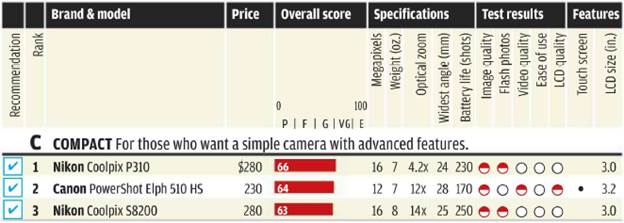
C. Compact for those who want a simple
camera with advanced features
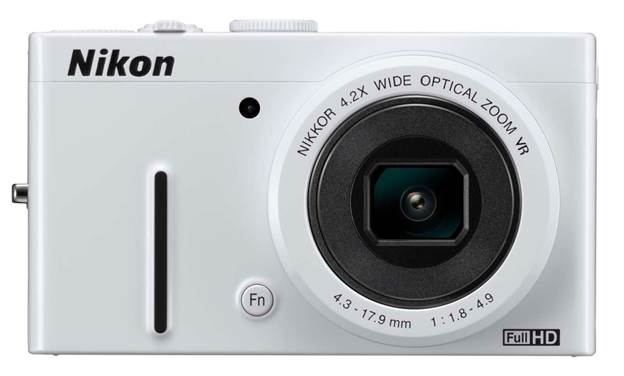
C1. Nikon Coolpix P310
Standout
rugged cameras
B1: Nikon $280
B2: Panasonic $320
B15: Sony $300
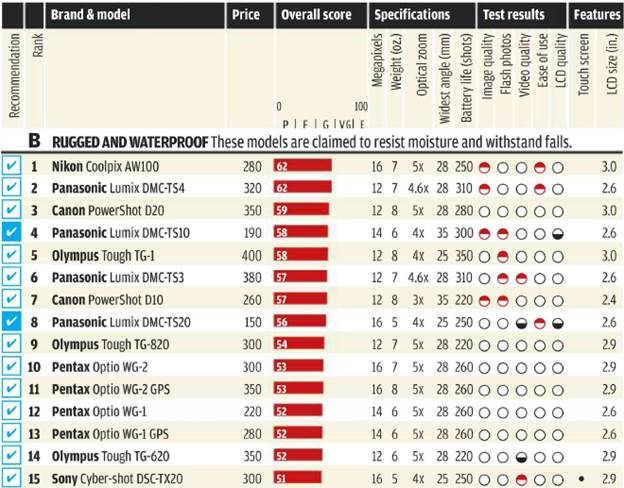
B. Rugged and Waterproof these models
are claimed to resist moisture and withstand falls
All are very good
performers designed for travel and outdoor use, with a non-telescoping lens. They
are claimed to meet industry shockproof and waterproof standards; we didn’t
test those claims. All but the Sony have built-in GPS. Nikon claims B1 is
waterproof to a depth of 33 feet and can withstand a drop of up to 5 feet. It’s
also designed to be easier to operate than most cameras when you wear gloves,
as you might when skiing. Panasonic claims B2 is waterproof to a depth of 39
feet and can withstand a drop of up to 61/2 feet. Although B15 has a
little less zoom than most in its class it has a touch-screen LCD, has
wider-angle capability (25mm) than most, and can capture very good video, rare
for a rugged model.
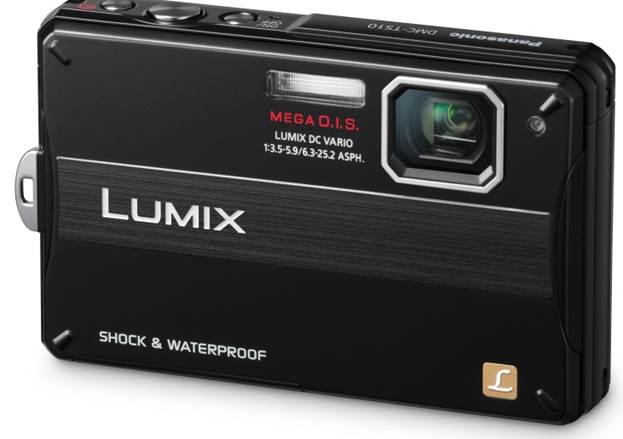
B4. Panasonic Lumix DMC-TS10
If long
zoom is a priority
D5 Panasonic $290
D9 Sony $350
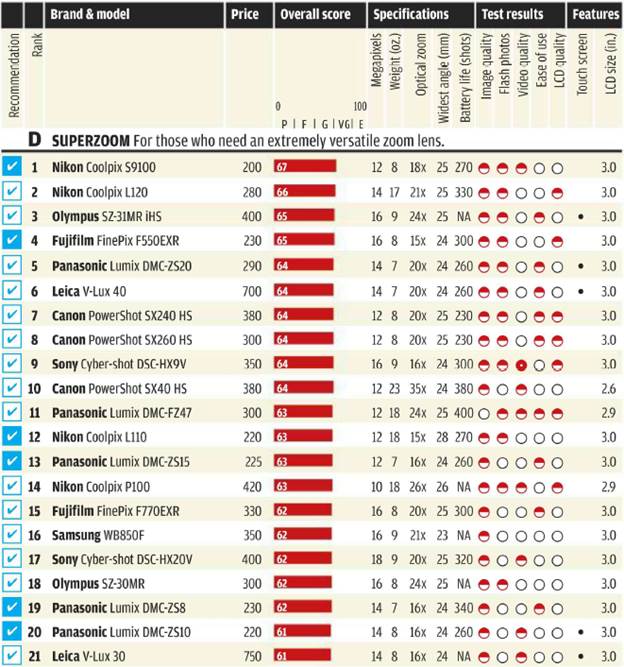
D. Superzoom for those who need an
extremely versatile zoom lens
D5 is svelte, at just
1.4 inches thick, and lightweight for a model with a 20x zoom. Its touch-screen
display makes it very easy to use. D9 is one of the few superzooms that capture
excellent video.
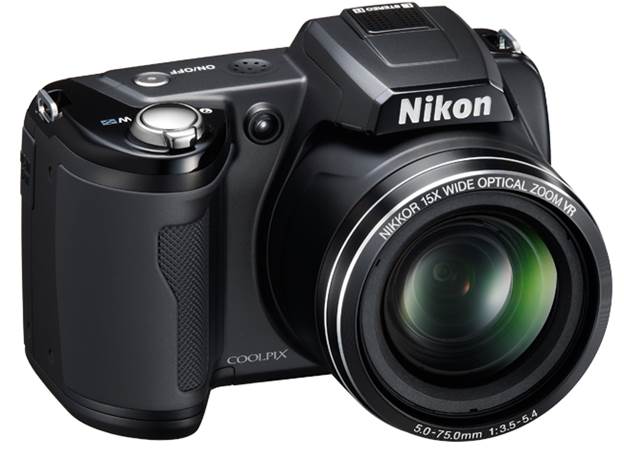
D12. Nikon Coolpix L110